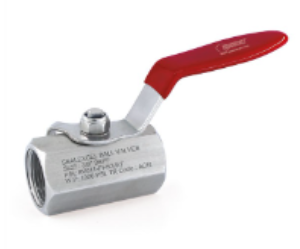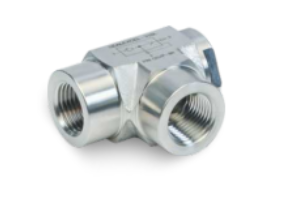Applications And Features of Stainless Steel Bulkhead Fitting
August 5, 2021Instrument Fitting – What Do You Need to Know?
October 27, 2021Pneumatic systems employ pressured air or gas to achieve mechanical motion, whereas hydraulic systems use liquids for the same reason. Pneumatic fitting technologies produce more flexible, reliable, less expensive, and significantly less harmful than actuators and electric motors.
What is pneumatic coupling?
A pneumatic coupler makes it simple to connect or disconnect a tool from a hose or pipe under pressure. The system is made up of two parts: a fast coupling (female part) and a plug-in or nipple (male part). When the coupling is disconnected from a component, it automatically closes the line, ensuring that the system remains pressurised.
Fittings can be attached to a diverse range of connector and device types in air-powered systems, including hoses, tubing, and pipe. The optimal pneumatic pipe fitting for your application and working environment will be largely determined by the operating pressures at which the system must operate.
Pneumatic systems are usually found in construction, factories, mills, and other construction and technology fields, and they typically rely on a centralised source of compressed air to power whatever motion is required.
In corrosive situations, stainless steel push-in fittings can be used. With the help of these fittings, can put the circuit together fast, and compressed can transport air at a wide variety of temperatures and pressures. They can be manually linked and unplugged at any time. Robotics and conveyor systems are two of their applications.
They can work at pressures ranging from -0.99 to 15 bar in temperatures ranging from 20 to 200 degrees. They are more expensive than other types of fittings because they are capable of excellent performance.
Pneumatics is a highly skilled mechanical operation that involves gases and is frequently performed under high pressure. Pneumatics are fascinating because they are a sophisticated process that most of us use daily, often without realising it.
Applications of Pneumatic coupler are:
Brakes
Pneumatic brakes, often known as air brakes, are a very effective braking technique used on large, heavy vehicles. The piston in these braking systems is compressed air, which helps the car slow down or stop.
Toys
Pneumatics are used in a few familiar toys, such as a bicycle or a ball pump. The air is compressed and forced into the ball or bicycle inner tube as the handle is pumped on the cylinder. Lego also makes a pneumatic brick, which moves thanks to pressurised air.
Tire pressure gauges
When you use a tyre pressure gauge (one of those small metal cylinders that check how full your tyre is), air from the tyre enters the hollow top half of the gauge.
The gauge now has a little piston inside it that is connected to a spring beneath it. The air from the tyre presses down on the piston, compressing the spring and pushing it down. The scale with the pressure measurement comes out as a result of this. The spring is what saves the scale from going entirely off the rails.
Jackhammer
This gadget is powered by compressed air and employs pumps to provide air to drill holes through hoses. Although this machine is generally referred to as a drill, its operating method is more akin to an automatic hammer. It is therefore referred to as an air-hammer or jackhammer.
Seal Excel manufactures stainless steel pneumatic fittings with high-quality control procedures. We at Seal Excel strive to meet all our client’s needs by delivering exceptional pneumatic couplers that have likely high life expectancy which works quietly and smoothly in any application and are at a reasonable price.



